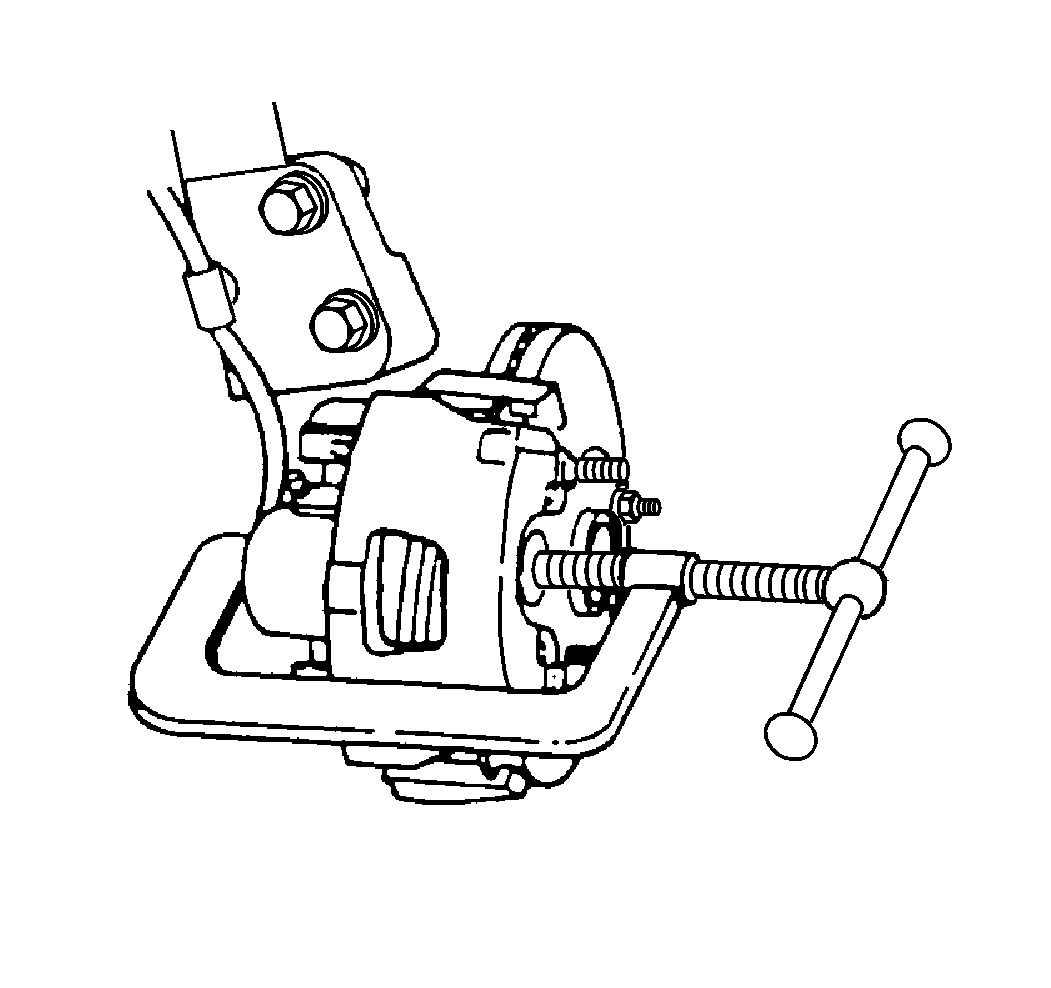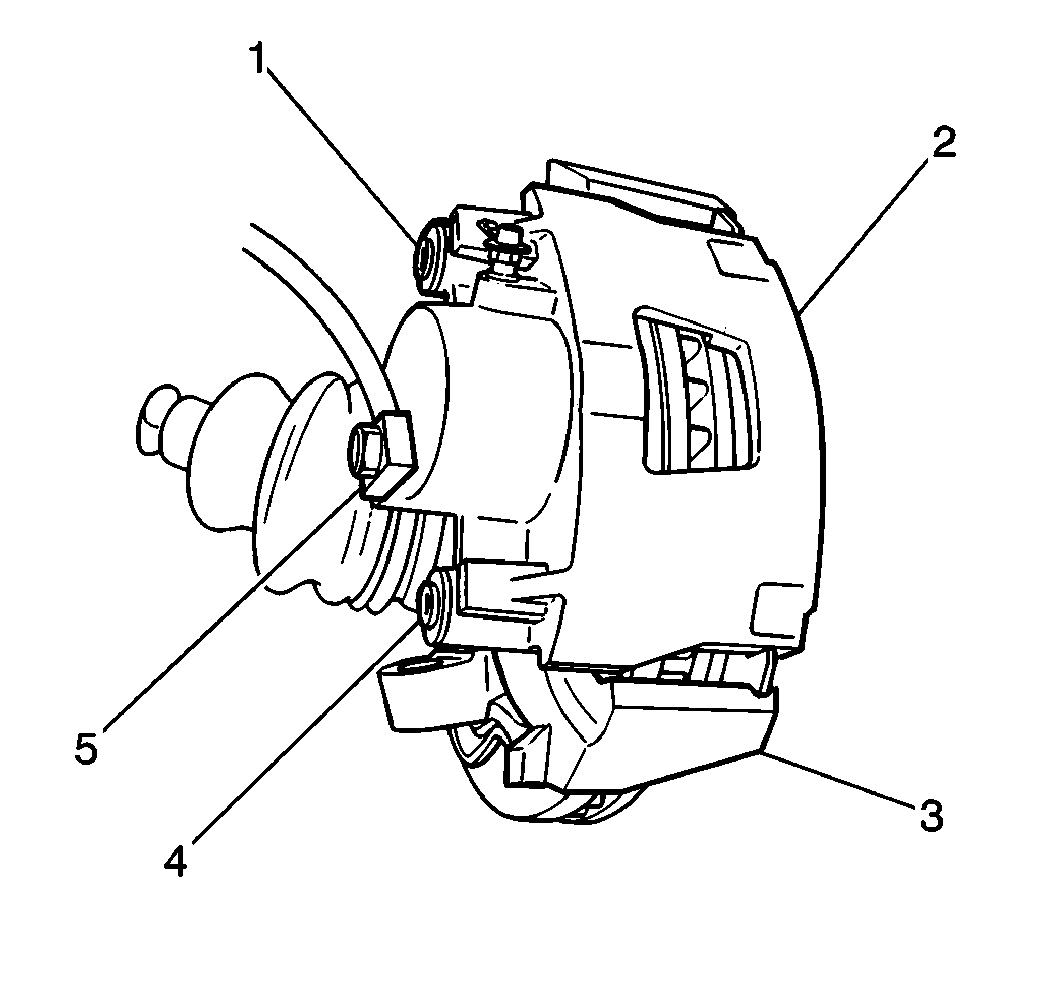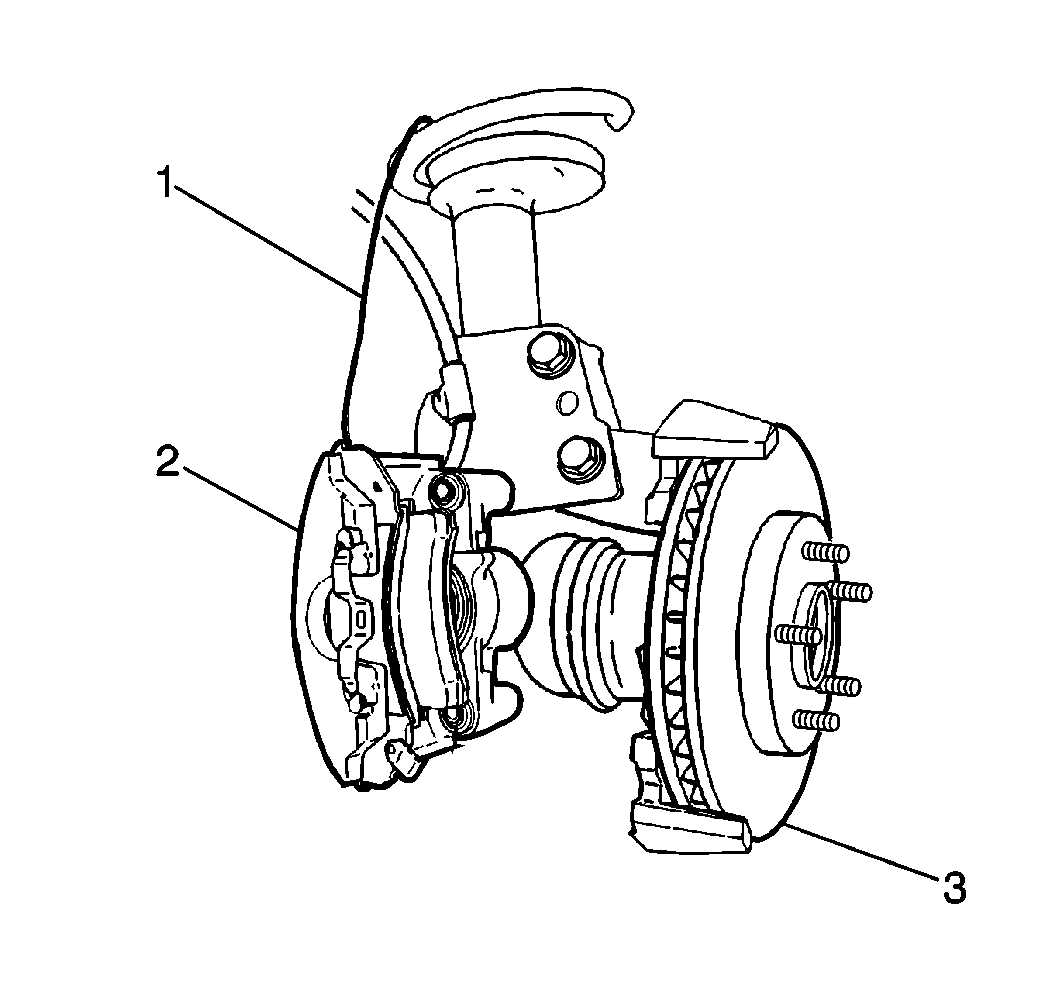Removal Procedure
- Inspect the fluid level in the brake master cylinder reservoir.
- If the brake fluid level is midway between the maximum-full point and the minimum allowable level, then no brake fluid needs to be removed from the reservoir before proceeding. If the brake fluid level is higher than midway between the maximum-full point and the minimum allowable level, then remove brake fluid to the midway point before proceeding.
- Raise and support the vehicle. Refer to Lifting and Jacking the Vehicle in General Information.
- Remove the tire and wheel assembly. Refer to Tire and Wheel Removal and Installation in Tires and Wheels.
- Hand tighten 2 wheel lug nuts in order to retain the rotor to the hub assembly.
- Push the piston into the caliper bore to provide clearance between the pads and the rotor for caliper removal.
- Remove the caliper bolts (1, 4).
- Remove the caliper (2) from the knuckle. Suitably support the caliper.
- Remove the pads from the caliper (2).
- Inspect the caliper bolts for corrosion or damage. Use new parts, including bushings, when installing the caliper if any corrosion is found. Do not attempt to polish away corrosion.

| 6.1. | Install a large C-clamp over the top of the caliper housing and against the back of the outboard pad. |
| 6.2. | Slowly tighten the C-clamp until the piston pushes into the caliper bore enough to slide the caliper off the rotor. |
| 6.3. | Remove the C-clamp from the caliper. |

Notice: Support the brake caliper with heavy mechanic wire, or equivalent, whenever it is separated from its mount and the hydraulic flexible brake hose is still connected. Failure to support the caliper in this manner will cause the flexible brake hose to bear the weight of the caliper, which may cause damage to the brake hose and in turn may cause a brake fluid leak.

Installation Procedure
- Bottom the piston into the caliper bore. Use an old brake pad or a wooden block across the face of the piston. Do not damage the piston or the caliper boot.
- Install the pads to the caliper (2).
- Install the caliper (2) to the knuckle.
- Install the caliper bolts (1, 4).
- Remove the wheel lug nuts securing the rotor to the hub.
- Install the tire and wheel assemblies. Refer to Tire and Wheel Removal and Installation in Tires and Wheels.
- Lower the vehicle.
- With the engine OFF, gradually apply the brake pedal to approximately 2/3 of its travel distance.
- Slowly release the brake pedal.
- Wait 15 seconds, then repeat steps 8 and 9 until a firm brake pedal is obtained. This will properly seat the brake caliper pistons and brake pads.
- Fill the master cylinder to the proper level with clean brake fluid. Refer to Master Cylinder Reservoir Filling in Hydraulic Brakes.
- Burnish the pads and the rotors. Refer to Brake Pad and Rotor Burnishing .

Important: Before installing new brake pads, wipe the outside surface of the caliper boot clean. Use denatured alcohol.


Notice: Use the correct fastener in the correct location. Replacement fasteners must be the correct part number for that application. Fasteners requiring replacement or fasteners requiring the use of thread locking compound or sealant are identified in the service procedure. Do not use paints, lubricants, or corrosion inhibitors on fasteners or fastener joint surfaces unless specified. These coatings affect fastener torque and joint clamping force and may damage the fastener. Use the correct tightening sequence and specifications when installing fasteners in order to avoid damage to parts and systems.
Tighten
Tighten the caliper bolts to 51 N·m (38 lb ft).
